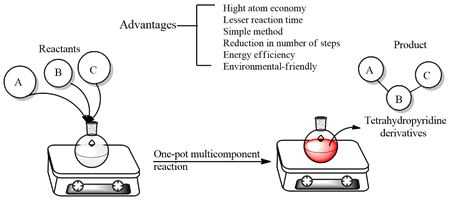Effect of Methods and Catalysts on the One-pot Synthesis of Tetrahydropyridine Derivatives: A Mini-Review

- Bioactivity; Catalysis; heterocyclic compounds; Multi-component Reactions; Organic Synthesis; Tetrahydropyridine Derivatives
Copyright (c) 2021 Orbital: The Electronic Journal of Chemistry

This work is licensed under a Creative Commons Attribution-NonCommercial-NoDerivatives 4.0 International License.
Abstract
As heterocyclic nitrogen molecules, tetrahydropyridines have been recognized as significant constituents of many natural and synthetic compounds, many of which have interesting biological and pharmacological properties. Tetrahydropyridines (THPs) play a pivotal role in synthesizing a range of remedial compounds. They have exhibited impressive curative efficacy for the treatment of numerous diseases. Due to this reason, they are attractive synthetic targets for organic chemists. Several techniques and schemes have been adopted for the synthesis of these molecules. Among these, multicomponent reactions (MCRs) are proved to be one of the best tools for achieving compounds containing complex diversity in a single step and production of their vast libraries. Along with this, the employment of various catalysts makes this technique more vibrant. This review article discussed different catalysts adopted in the synthesis of tetrahydropyridine derivatives via multicomponent reactions to provide information for the development of new-fangled processes aiming at less reaction time, better yield, and minimum side effects.
